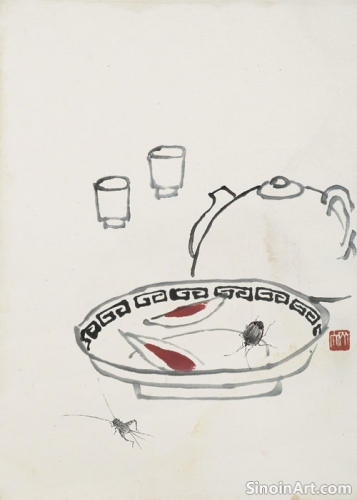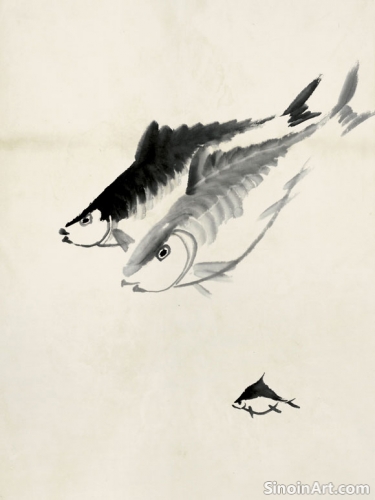The Significance of the Seal in Xieyi
|
The seal, or yìn (印), is an essential element in Xieyi painting, serving as both a signature of the artist and a testament to the artwork's authenticity and artistic intent. The seal is more than a simple mark, it carries cultural and historical significance.  The use of seals dates back thousands of years in China and has been used by artists, scholars, and collectors to mark their ownership or approval of artwork. Each seal is carefully carved with unique characters or designs and applied with a special red ink. The seal has become a kind of artistic signature.  The placement of the seal on a painting is carefully considered, often balancing the visual elements of the composition and contributing to the overall aesthetics. The size, shape, and color of the seal should harmonize with the painting, not overpower it. It is a balancing act of ink and space.  Seals are not always just a signature; they can also express the artist's personal philosophy, aspirations, or even their mood at the time of creation. The characters engraved on a seal can have a variety of meanings, adding layers of interpretation to the artwork. The seals themselves can become art pieces. Over time, seals can become a record of an artwork's provenance, providing important information about its history and ownership. Collectors may add their own seals to indicate their appreciation and to trace the painting’s journey over generations. Seals carry a long history and provenance within the artwork. |
Tag : Art seal, art authentication, provenance, signature in art
Related information
- The Use of "Reversed Brush" in Xieyi
- The Essence of Xieyi: Capturing the Spirit
- The Legacy and Future of Xieyi Painting
- The Concept of "Baimiao" and its Relationship to Xieyi
- The Legacy of Xieyi: From Tradition to Innovation
The "Reversed Brush" (nìfēng) in Xieyi involves starting a stroke by moving the brush in the opposite direction, then reversing to create strong, textured, dynamic lines, conveying a sense of force, resistance, and visual interest, while requiring precise control and a deep understanding of brush responsiveness.
Xieyi, or freehand ink wash painting, emphasizes the expression of the artist's spirit through simplified forms and bold brushstrokes, using calligraphic techniques and negative space to convey the essence of a subject.
Xieyi painting, with its rich history and unique aesthetic, continues to hold significance and inspire artists, influencing contemporary art globally, ensuring the continuation of its traditions, and its continued evolution and relevance as it continues to express cultural values and universal truths, making it an enduring art form.
"Baimiao" (plain drawing) is a foundational technique in Chinese painting, emphasizing precise line drawing to define a subject's contours and forms, influencing Xieyi by shaping its underlying structure, informing composition, and contributing to the overall control and confidence seen in the best Xieyi works.
This article traces the legacy of Xieyi painting from its origins in the Song Dynasty to its continuous evolution through subsequent dynasties, exploring its transformation from a tradition to a vibrant contemporary practice.